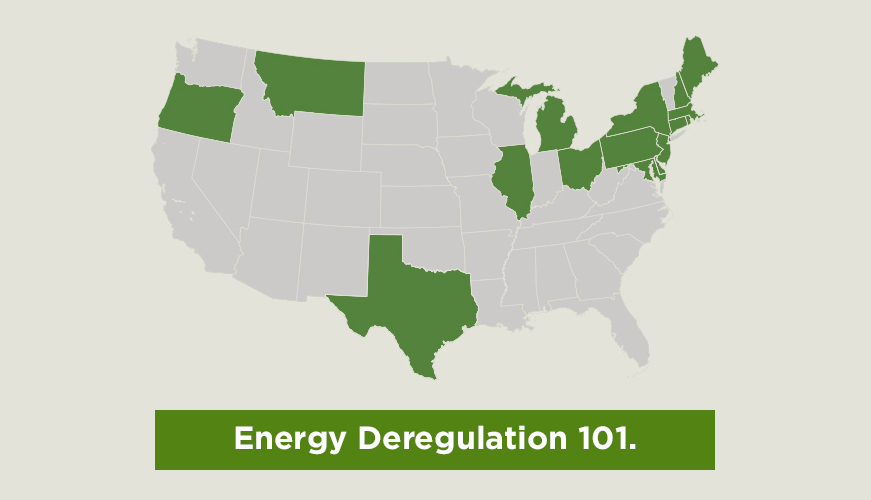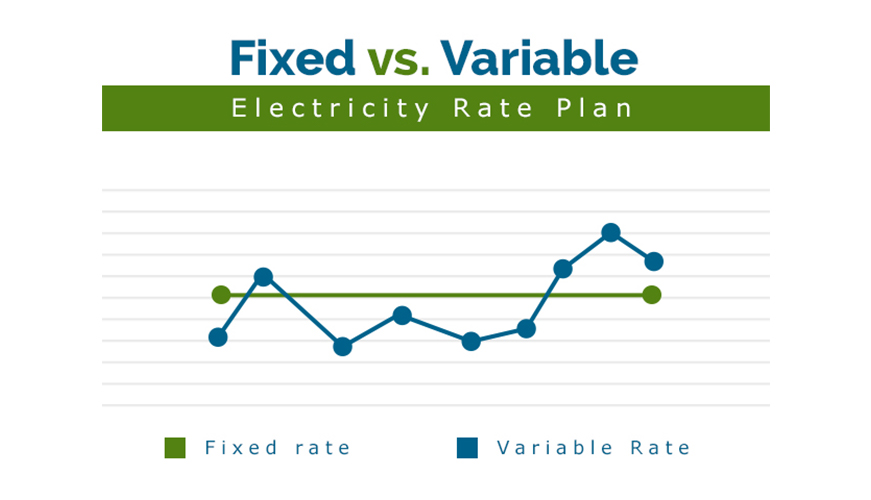How It Happened
Before deregulation, the power industry was essentially made up of large, government-sanctioned monopolies. Electric utilities controlled the whole energy process from generation to transmission to distribution, and the government placed regulations on the companies to keep them from taking advantage of their customers. These rules determined how much profit utilities could make, how high they could set their rates, and what environmental standards they needed to follow. In the 1980s, however, other important industries (like airlines, railroads, and telecommunications) were deregulated. Because this process was so successful, the energy industry was inspired to follow suit.
The groundwork for deregulation was laid out in 1978 when Congress passed the Public Utilities Regulatory Policy Act (PURPA) to introduce competition into the monopoly network. PURPA allowed independent electric companies to generate power and required utilities to buy it. By the mid-1990s, the push for deregulation went beyond PURPA, and many states started breaking up the monopolies themselves. Deregulation laws required utilities to sell their electric generation plants (which were then bought by independent companies), creating a retail market for electric suppliers.
The utilities still handle billing and distribution to customers, but now the supply of power can come from independent providers rather than the utility itself. The goal of this process is to create competition between energy companies. Competition encourages suppliers to lower prices, embrace innovation, provide better service, and create new products like green energy and fixed rate pricing.
Not all states have deregulated energy markets. Some have deregulated electricity but not natural gas, or vice versa. Here is a list of states that currently have deregulated electricity markets:
- Connecticut
- Delaware
- Illinois
- Maine
- Maryland
- Massachusetts
- Michigan
- Montana
- New Hampshire
- New Jersey
- New York
- Ohio
- Oregon
- Pennsylvania
- Rhode Island
- Texas
- Washington D.C.
So does deregulation work?
At first, energy deregulation seemed like a failure due to its catastrophic trial run in California in 2000. Instead of lowering prices through competition, the unregulated power suppliers raised prices, making a profit for themselves while pushing the utilities toward bankruptcy and causing blackouts throughout the state.
Pennsylvania, however, took the opportunity to learn from California’s mistake. When Pennsylvania transitioned to a retail energy market, the results can only be described as a success: lower electricity prices, increased savings, and an array of new products from companies trying to sell the best deals to their customers.
Since then, many other states have deregulated their energy markets successfully. It’s become clear that the question we should be asking is not whether deregulation works, but how. Any new way of doing things has its advantages and disadvantages, and as we go forward, states are learning how to create policies that will emphasize the pros and eliminate the cons.
Pros and Cons
| PROS | CONS |
| The most talked-about benefit of energy deregulation is that it gives the customer the power to choose where their electricity comes from. A customer can always be on the lookout for cheaper prices and better deals when there are options to choose from. | Competition from Retail Energy Providers (REPs) drives utilities to cut costs, and these slashed funds often come from programs that help low-income customers get access to electricity. Many states have taken steps to counteract this trend by including provisions for low-income families in their deregulation laws. |
| The power to choose also means that more customers can get green energy. Many Retail Electric Providers (REPs) offer 100% renewable energy plans for their customers who want to do their part for the environment. | Electric companies began to take advantage of states with lax environmental standards, moving to locations where they could use pollution-heavy methods to produce cheap energy. States try to prevent this by setting up Renewable Portfolio Standards that require a certain amount of their energy to come from clean sources. |
| Deregulation increases the competition between suppliers. This means that in order to differentiate themselves from other companies, electricity suppliers come up with better prices and innovative, new products to convince customers that they are the best option. Energy suppliers are motivated to find the least expensive rates, offer the most useful energy products, and provide the best customer service because they know their customers will take their business elsewhere if they’re not satisfied. | |
| All the political conflict surrounding deregulation has made the public pay attention to something they didn’t have to think about much before. Now that customers have options when it comes to energy supply, there is an increased awareness, a desire for knowledge, and a growth in discussion about the energy we are consuming, where it comes from, and how we buy it. |



